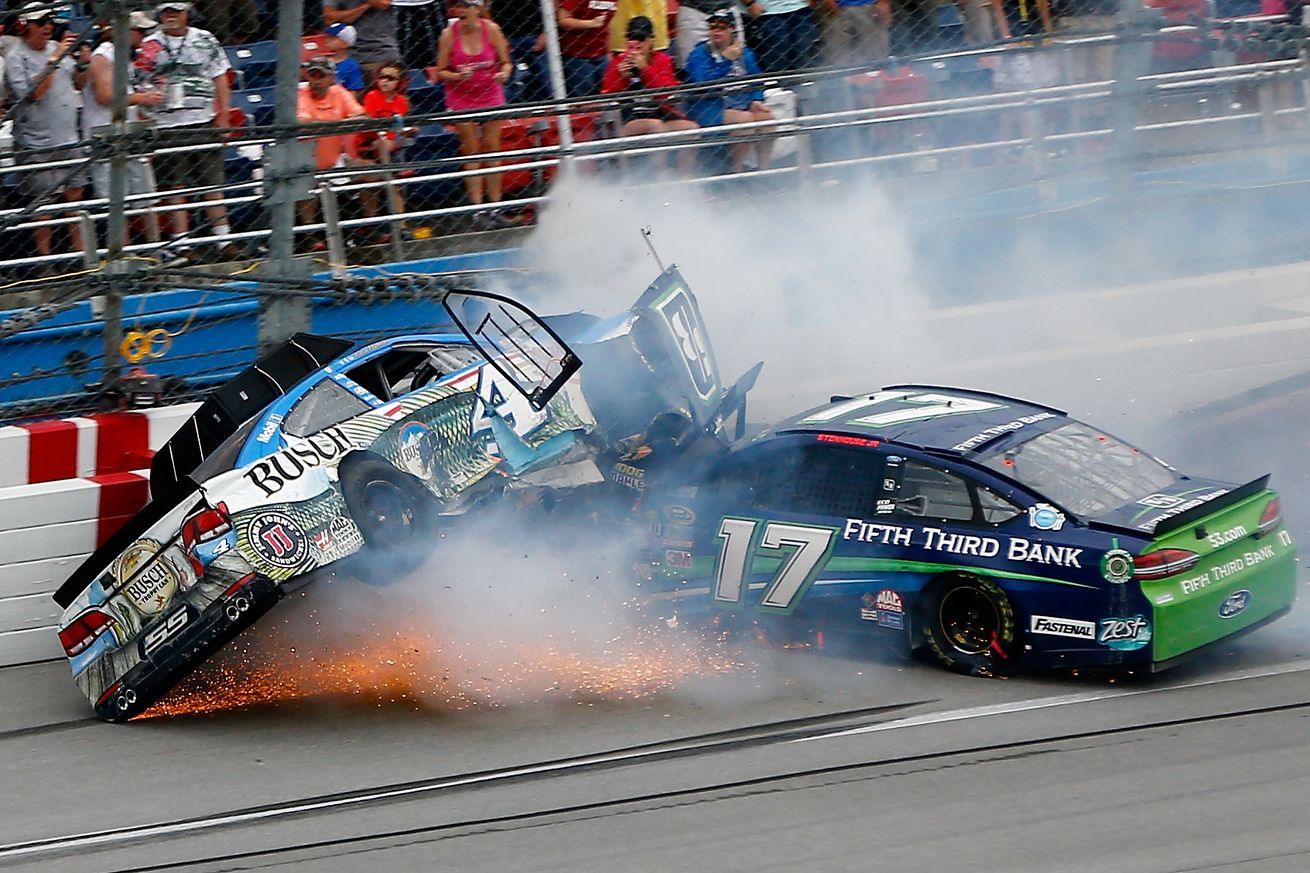NASCAR restrictor-plate racing panned
 |
| Talladega was a wreck-fest |
| Jonathan Ferry/Getty Images for NASCAR |
I've written so many columns about the highly questionable judgment – or lack thereof -displayed by the powers that be at NASCAR over the last seventeen years of producing this web weekly that it grew old a long time ago. I have reserved particular ire for the lethal joke called "restrictor-plate racing" – the motorized form of Russian Roulette that plays out four times a year at two tracks – Daytona and Talladega. Except that it isn't racing at all. No, it's rampant stupidity of the highest order, a recipe for carnage that courts disaster lap after lap.
The racers hate it. The team owners hate it. And the real fans hate it. And yes, there is a particular strain of vermin out there who call themselves "fans" who think it's highly entertaining and who believe that the drivers should just shut up and drive, but they are irrelevant to this discussion. Why? Because they view the whole display like a video game, where mayhem ensues and there are no real consequences for anyone. Except that there are and there will be. It's just inevitable.
NASCAR – and its drivers – dodged bullets yet again after the disgusting display at Talladega on Sunday (I refuse to call it a "race"). It could have easily been very different. Can you imagine what the tumult would be like today, given the absolutely insane din of the 24 hours-a-day social media circus we live in if a driver, or several drivers, lost their lives on Sunday? Can you imagine what would it be like today if a car had flown up into the stands and mowed down a hundred people on Sunday? The disaster at the 1955 24 Hours of Le Mans, where 83 people were killed and more than a hundred were injured, almost killed the sport for good. Can you imagine the outrage that would be overwhelming the sport today if that had happened at Talladega on Sunday?
Yet everyone involved – NASCAR, the drivers, team owners and the manufacturers – shrug and mutter to themselves and move on to the next race. The drivers shrug because they're powerless to do anything about it, or at least they think they are. The team owners fume because they're on the hook for millions of dollars. The manufacturers think they're somehow immune to the consequences, which is strange because, believe me, if a car went into the stands and there were multiple fatalities every media outlet in the world would be sure to mention the car brand. And NASCAR? Well, inaction is their specialty. And the most you can expect out of France & Co. is areaction to circumstances, unless it's embracing another new marketing gimmick or genius plan to fleece sponsors.
Do I need to remind you that NASCAR adopted wholesale changes to its tracks and its cars only afterDale Earnhardt – one of its most iconic and beloved drivers – was killed at Daytona back in 2001? Probably not. The sad reality is that with the extra safety measures taken since that dark day at Daytona, people have become lulled into thinking something along the lines of, "Oh, it's all figured out, the drivers always walk away."
Except that one day they won't. And it will have been so damn pointless and unnecessary.
As I've said repeatedly, I have the utmost respect for the drivers and the crews in NASCAR. Ask anyone who really knows the racing business and they'll tell you that some of the finest talent in the motorsports world works in the NASCAR garage. NASCAR needs to tap into that talent and figure this "racing on the big tracks" thing once and for all, because it is simply out of excuses.
And if NASCAR fails to do so, and fails to fix what's going on at Talladega and Daytona, it will be courting a disaster the likes of which would alter the future of racing forever. Peter DeLorenzo/Autoextremist
